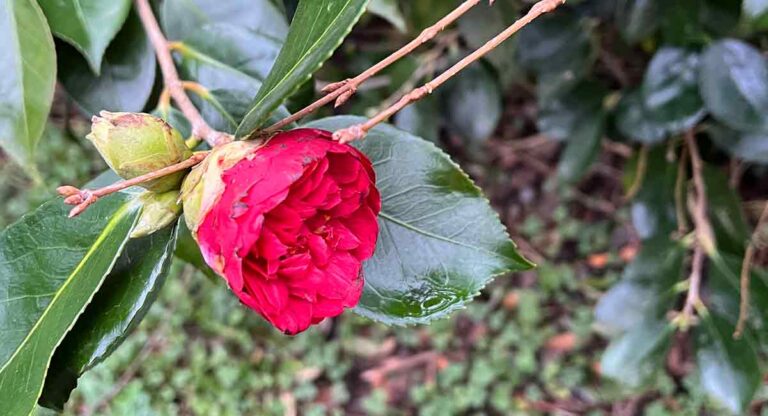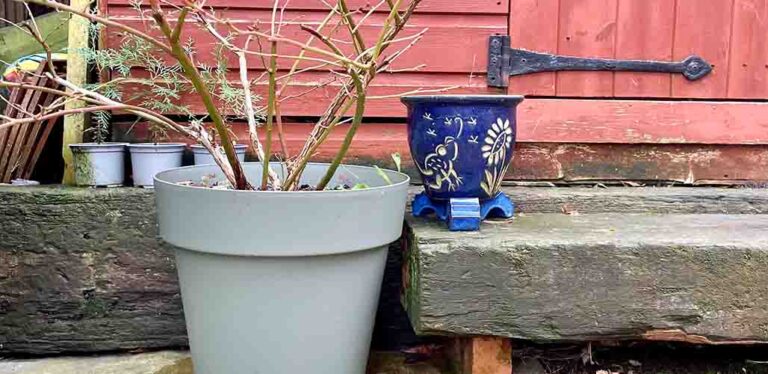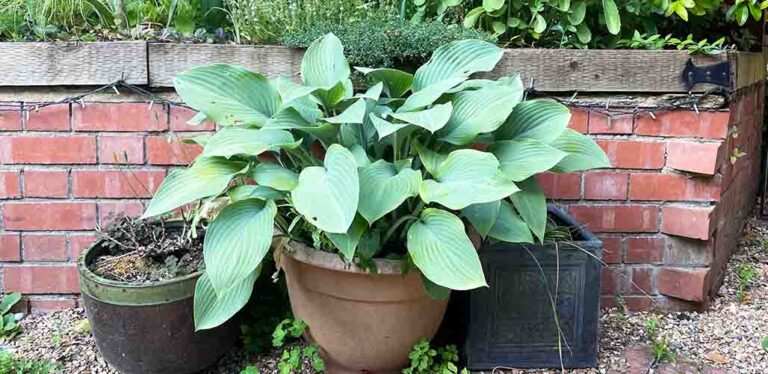How To Stop Rose Petals Going Brown
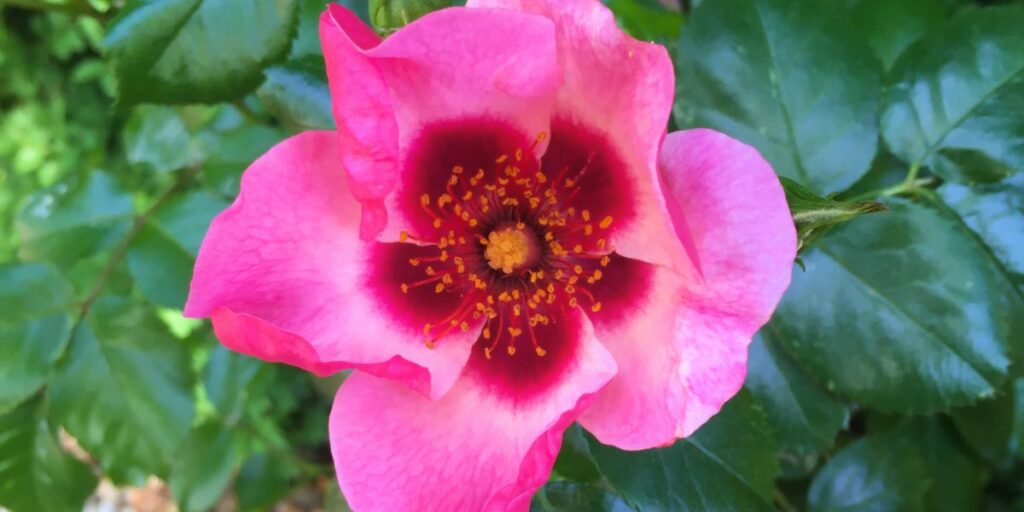
Usually when rose petals turn brown, it’s just because a healthy blossom has reached the end of its natural lifetime. Sometimes though, it happens because something malign is cutting short your blooms in their prime. And when this happens, both you and your rose deserve better! So here’s how to recognise when premature discoloration and wilting are symptoms of a problem, and how to stop rose petals going brown before their time.
How long do rose petals usually last before they wilt?
Eventually, discoloring and wilting away is the inevitable ending for all rose blossoms. Once the ovule (egg) deep in the center of the flower is fertilized, the plant shifts its energy away from maintaining the petals, and into ripening the seed-bearing fruits (rose hips). So the petals turn brown, shrivel, and fall away.
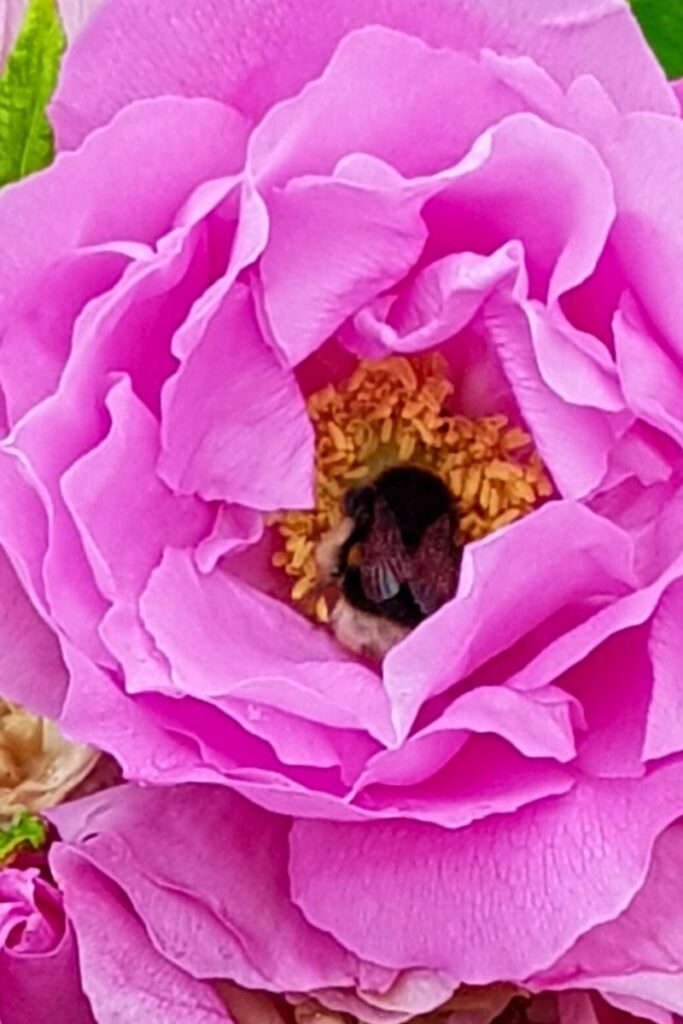
Whilst insect pollinators like this bee can help fertilize roses, most varieties are self-fertile. That means the pollen can fertilize the ovule of the same flower. So nothing can stop the petals eventually becoming redundant! How long they last before wilting depends partly upon their variety. But lots of roses also wilt faster in hot conditions.
Some varieties naturally wilt and go brown faster
All roses fall broadly into three categories.
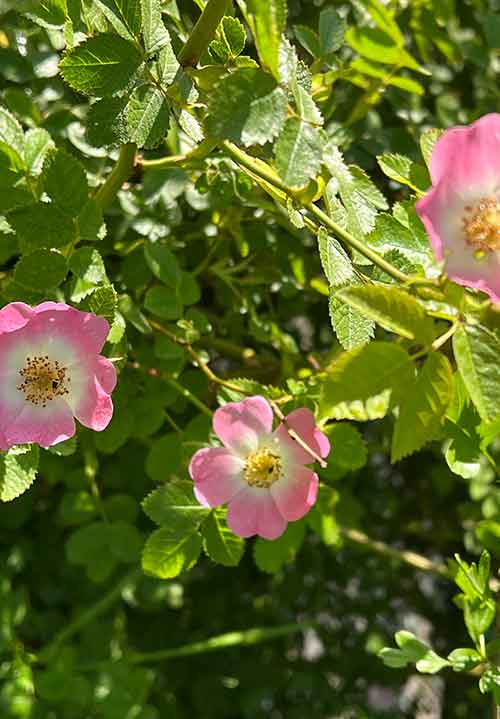
- Wild roses. Also known as species roses, these varieties remain unchanged from their wild-growing ancestors.
- Old garden roses. These are heirloom varieties which gardeners appreciate for their heady scent, hardiness, and disease-resistance. They only produce one flush of flowers, usually in late spring. They usually produce lots of small blossoms, and each individual flower goes brown and dies off again relatively quickly.
- Modern roses. Modern roses blossom continuously from late spring until the first frosts. The flowers are usually fewer, but larger than on wild and old garden roses. Each flower lasts longer before the petals start to turn brown and wilt too. But, modern roses are usually less strongly scented, and less disease-resistant than heirloom varieties.
Your climate can speed up how fast rose petals wilt
These days, modern roses have been developed in almost every size, shape and color conceivable. Specific varieties have also been cultivated for their tolerance to cool, northerly and north-facing conditions, or hot, southerly and south-facing conditions. But planting a cool-weather loving rose into a sun baked, south-facing yard is going to cause it stress. Its flowers will wilt faster than they would have in a more suitable climate, because they are most expendable part of the plant. The petals might even turn brown and wilt before the ovule is fertilized. This could be through direct heat damage from the sun. Or it could be that the plant is too stressed to spare the energy for ripening fruit, so it sacrifices the flower.
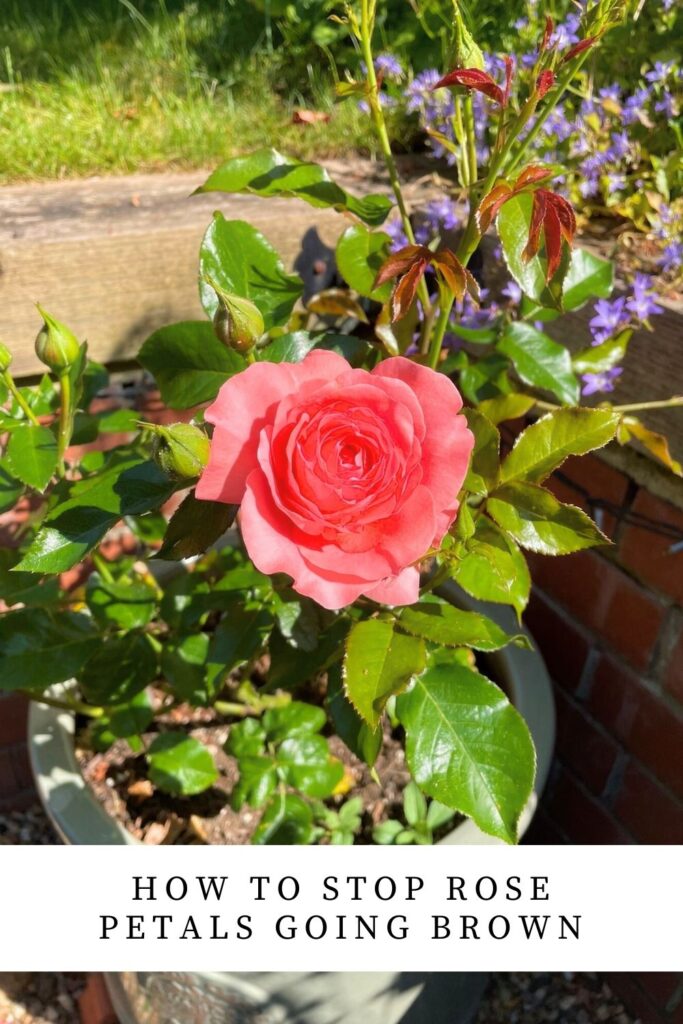
How to grow roses with long lasting petals
The old gardening adage about selecting the right plant for the right place is never more true than when it comes to choosing roses. For rose petals that stay perfect as long as possible without going brown:
- Opt for a modern rose over a wild or old garden rose.
- Choose a variety which has been specifically bred to perform well in the conditions where you’re going to plant it. Most online nurseries allow you to filter roses based on aspect, degree of shaded, and being particularly heat tolerant. Or talk to the experts at a local nursery for advice specific to your region.
- Prolong your rose’s blossoms for the longest time possible by putting shade cloth above them if the temperature is due to be above 90°F for a long period.
- Shade netting is a bit of an eyesore though, and hardly the backdrop your glamorous roses deserve. So if you live in a region which reliably has long summer periods hotter than 90°F, perhaps plant your rose under a gazebo or pergola with a slatted roof instead.
- Watering during dry periods will also help the flowers last longer before turning brown.
- As might applying mulch around the base of your rose to prevent moisture evaporating from the soil.
Deadheading roses with brown petals
When the inevitable does happen, and your rose’s petals turn brown, should you deadhead them, or not? It depends whether they’re an old garden, or modern variety.
Old garden roses. Old garden roses only produce one flush of flowers, but they usually have attractive hips after the flowers fade. There’s no point deadheading wilted flowers from old garden roses because the plant won’t produce any more blossoms. Leave them untouched for the spent petals to fall away naturally, and in fall you’ll be rewarded with bright, jewel-like hips. These hips are an important food source for birds in winter too!
Modern roses. Modern roses flower continuously as long as you keep removing wilted flowers. Their hips are usually nothing to write home about either, so snip off flowers when the petals start to shrivel and turn brown. Even though it’s a bit sad to see the blossoms fade, there’s something oddly compelling about filling a gorilla tub with rose petal confetti. And my daughter loves playing with it!
Now let’s turn our attention to the problems, pests and diseases that can cause rose petals to turn brown. These aren’t something you just have to accept, so here’s how to stop them too!
Rose bloom balling
Rose bloom balling happens when flower buds get very wet, and then they’re exposed to hot sunshine before they have completely dried out. They could be wet because they’re growing in a damp, shaded area where heavy dew forms overnight, or because they were caught in a rain shower. Either way, when the soft, wet petals are hit by hot sunshine, they get baked into a hard, brown casing. This casing of crispy brown petals stops the flower from being able to open up, so eventually it just withers and dies.
Moving a rose to a less cold and damp location will usually reduce your problems with balling, but obviously none of us can control the rain! Balled buds can sometimes be saved though – it depends upon how deeply saturated with water it was before it got baked. Gently crack open the dry shell, and peel it away if you can. If the bud was nearly ready to open, and only the outermost petals were wet when the sunshine hit, the remaining petals should open up and look almost as normal. But if the bud was small, or soaked through, you might find it can’t be opened. Buds that can’t be saved should be pruned away and disposed of immediately, otherwise they become the perfect place for fungal infections like botrytis and mildew to enter your plant.
Botrytis blight
Speaking of which, botrytis blight is a type of rot caused by the fungus Botrytis cinerea. The fungal spores flourish in mild, damp or humid conditions, and they can infect rose petals which aren’t balled up too. You’re most likely to encounter this problem in fall, or if you plant your rose in a shaded area.
Botrytis blight, also simply known as ‘blight’ appears as brown flecks and speckles on the petals of a new flower, and quickly turns into patches of fuzzy gray mold. If you’ve ever grown soft fruits that turned soft and grew gray mold, that was likely botrytis blight too. Look for patches of soft, dark brown or gray tissue on the stems of roses as well, especially at the base of infected flowers. Prune away infected flowers and stems, but don’t add them to your compost heap, or you could end up returning the botrytis spores to the soil around your roses next year! Get rid of them with your kerbside waste instead.
After pruning away infected stems, disinfect your tools thoroughly, to avoid infecting the next plant you tend to. Some fungicides in garden centers promise to help treat botrytis blight, but cases of fungicide-resistant blight are increasingly being reported.
Thrips
Most insect inhabitants of roses are relatively harmless, like this beautiful iridescent rose chafer bug. Even harmful pests, like aphids and blackfly don’t usually cause rose petals to turn brown.
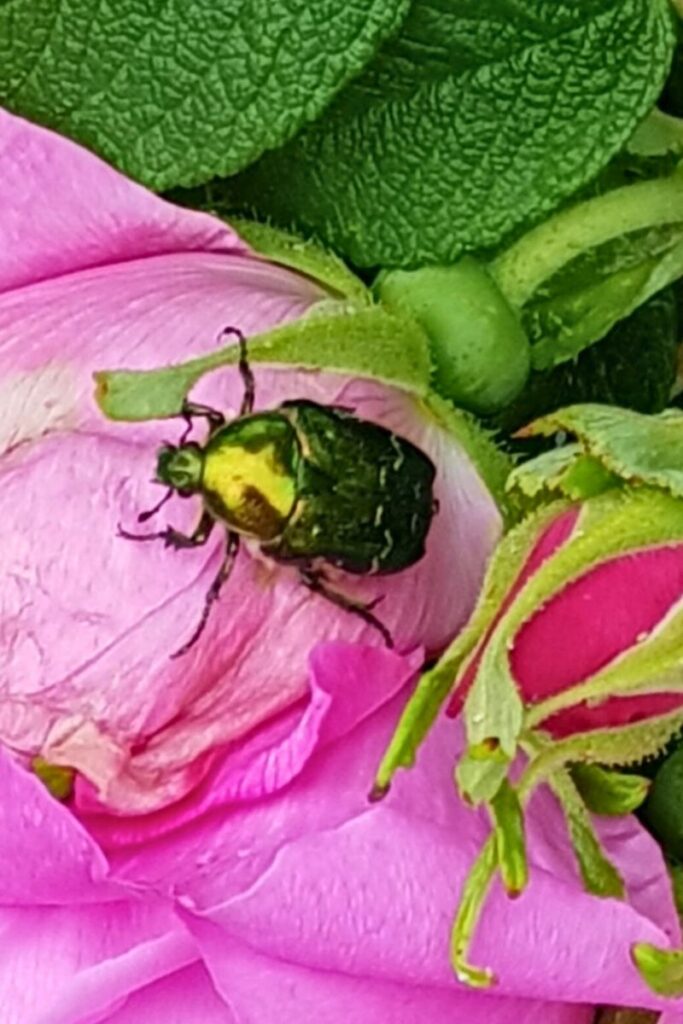
But thrips are different. Thrips might in fact be the arch nemesis of the rose gardener. They are tiny insects, usually less than 1mm long. And the only quite interesting thing about them is that thrips is the correct singular and plural word for them. One thrips, two thrips! Other than that, they’re a total pest with no redeeming qualities. They make their way deep in between the petals of roses while they are still at the tight bud stage, and feed off their sap. Some species gain access to the sap by vibrating their wings to damage the petals. Literally smashing up your rose blossoms from the inside! When the petals finally open, they are brown and mottled, and the edges have a distinctive ‘singed’ look. The brown areas usually appear contorted too.
To add insult to injury, thrips are really, really tricky to get rid of. Partly because they hide so deep inside closed flower buds that it’s hard to bring them into contact with insecticides. And also because some species have developed insecticide resistance anyway. Some time-honored approaches for getting rid of them include:
- Using sticky traps next to affected plants
- Adding sugar syrup to insecticide, to lure thrips out from their hiding places.
How to stop rose petals going brown – summary
Before your worry about stopping rose petals going brown, check you’re sure why they’re going brown. Is it definitely avoidable? Then, most problems with rose petals going brown sooner than they ought can be resolved by moving your plant to a more suitable spot. A rose in a warm, dry location, which is relatively open to ensure good ventilation, is less likely to wilt prematurely, or suffer from balling or blight. Alternatively you can gift your rose to someone who does have the right conditions, and choose a more suitable variety (or dare I say it, a different plant) for your own garden.

